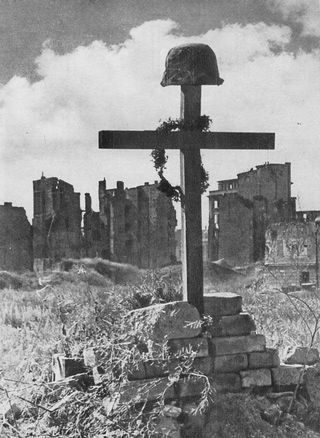Memory
Why You Should Not Watch ISIS Propaganda
The importance of venerating our fallen and honoring their families.
Posted March 6, 2018
There are not many people, places, or things that severely polarize the Veteran community from within. While not necessarily a homogeneous group, there appear to be a loose group of principles unofficially agreed upon, but held sacred, by most members. One such maxim: we venerate our dead and honor their families. Well, this at least seemed true until approximately 36 hours ago.
SOFREP, a self-touted “trusted news [source] and intelligence from spec op veterans,” uploaded helmet camera footage from a soldier caught in the deadly ambush in Niger this past October. Footage that from October 4, 2017, until March 4 2018, has seemingly solely been in the hands of Daesh (ISIS).
In those intervening six months, ISIS edited the footage and supplemented their own soundtrack. For those unfamiliar, ISIS is no novice when it comes to the construction and distribution of propaganda. As such, we must never associate their brand of extremism with dimwittedness. Nor should we perpetuate their message.
Consequently, the video released by SOFREP was just that, the final cut off the ISIS propaganda draft board--albeit without soundtrack. Published under the aforementioned maxim, SOFREP justified their decision by dictating that the viewer, “hold reverence for the fallen in your soul and hatred for the enemy in your heart….We honor these men by watching their last stand, not by turning away; they were true warriors to the end.”
As outrage from a portion of the Veteran community poured in, SOFREP doubled down on their decision and equated the release of the video with the famous 1943, Life Magazine photo, depicting dead American soldiers at Buna Beach. The photo they reference was the first photograph depicting dead American troops in any American publication during World War II.
Here lie three Americans…This is the reality that lies behind the names that come to rest at last on monuments in the leafy squares of busy American towns.
Here’s what SOFREP failed to mention. First, it took nearly a year for the photo of our boys on Buna Beach to be vetted, approved and released. A year. It was not some knee-jerk decision made in a team room. The Life photo was released because there was institutional (read: government) fear that complacency was mounting in the average American about a war that was far from over and in which victory remained uncertain.
Equating the state of that American public with the current American public in regard to the Global War on Terror is not entirely inaccurate. However, posting the video under the pretense that by doing so the average America will remember (and care) there is still a war being fought, is a fallacy.

Why? Bear with me for a moment.
The photo (not pictured here) is powerful in its starkness—it shows clearly the desolation of war, the loneliness of death on a distant shore, AND yet, you cannot see the men’s faces. We venerate our dead and honor their families.
The release of the photo in 1943, likely created, what psychologists refer to as, a flashbulb memory for many Americans. These memories are highly detailed and vivid "snapshots" of either the moment or the situation in which surprising and consequential news was heard. The principal determinants of such a memory are thought to be a high level of surprise, a high level of consequentiality, and emotional arousal.
Think of September 11, 2001. Details of that day and where you were when you heard the news are likely seared into your brain in a way which neurologically differs from the memory of what you had for breakfast last Tuesday. Not to get too into the weeds, but studies have related specific neural systems to the influence of emotion on memory.
This matters because the release of the Life photo in 1943, checked all those boxes. The photo of those boys was the first of its kind, it was done in a highly public, widely circulated way, with great consequence. As such, it more likely resulted in the creation of collective flashbulb memories than the circulation of an ISIS propaganda video detailing death and atrocities.
For better or for worse, regarding the latter, we’ve (the American public) have seen it. We’ve seen too much humanity brutalized at the hands of ISIS. We’ve had the cruelty and callousness of war pushed in our faces in various ways over the past decade and a half. This video is another drop in a bucket overflowing with the tears and sweat of a too small group of men and women who have borne and seen the devastation of war firsthand.
Moreover, the central purpose of ISIS propaganda is to shape the perception and polarize the support of contested populations. Giving their video wider circulation is feeding directly into their information operation campaign. In the same way that there is some evidence to suggest that notoriety, such as publicizing and detailing mass shootings, plays a role in the recruitment and radicalization of future shooters, this video serves no purpose but to potentially do the same.
Finally, but by no means of least importance, a discussion regarding institutional betrayal must be had. A relatively new psychological term, institutional betrayal refers to wrongdoings committed by an institution on individuals dependent on that institution, including failure to prevent or respond supportively to wrongdoings perpetrated in the context of that institution.
No, SOFREP is not Special Operations Command but they are made up of combat veterans and former Special Operations personnel. Posting a video of the gut-wrenching final moments of their comrades without ANY consideration of the possibility of the retraumatization of their families is thoughtless at best, outright betrayal at worst.
For those who have not watched the video. I implore you, do not. Not because I want you ignorant of the harshness and terror of war or to forget our fighting men and women. But because death comes for us all, often too soon for those that wear our Nation’s uniform. Let us attempt to dignify what is naturally undignified by protecting and making sacred the final moments of these young men’s lives. Like the men on Buna Beach, they made us proud. They fought with all they had, with all they were, and they died together as brothers.




